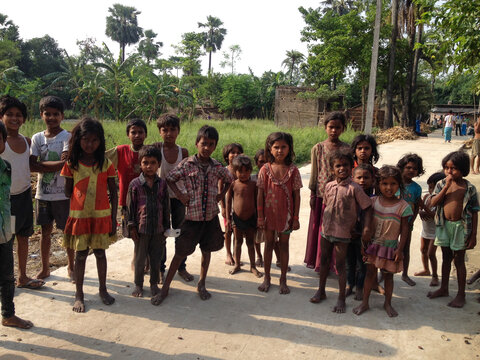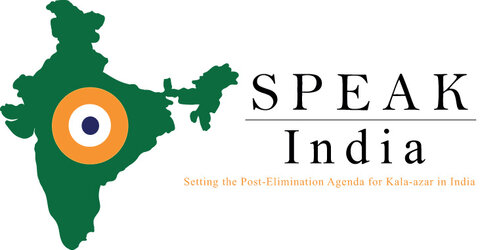Eliminating Kala-azar in India

Article by Shannon McIntyre, LSHTM
Visceral leishmaniasis (VL), also known as Kala-azar, is a parasitic disease caused by species of the Leishmania genus. While other forms of leishmaniasis exist, VL is recognised as the most severe manifestation. Infection is typically characterised by fever and enlargement of the spleen, and is usually fatal if left untreated.
Over 90% of VL cases worldwide occur in only five countries, of which India is one. In India, the species causing VL, Leishmania donovani, is transmitted by the sandfly Phlebotomus argentipes. It predominantly affects low socio-economic communities, and poverty status has been identified as one of the most significant factors influencing the development of the disease. This is because impoverished individuals are likely to have poorer quality housing and nutrition, and suffer from additional morbidities (Bern et al., 2010).
Between 2004-2008, an average 34,918 cases of VL were reported each year, with estimates of the true number ranging from 146,700 – 282,800 (Alvar et al., 2012). The number of new cases has fallen in recent years, and under-reporting rates have improved dramatically; however, VL remains endemic in India’s north-eastern states, particularly Bihar, Jharkhand, Uttar Pradesh and West Bengal.
The Government of India has committed to eliminating VL as a public health problem (<1 new case per 10,000 persons at block level) by 2017. A vaccine is not available for VL, therefore control of the disease to date has focused on intensive disease management (IDM), including improving access to diagnosis and treatment, and environmental management, particularly indoor residual spraying with insecticides.
It is not clear which of these approaches is having the most significant impact on case numbers. In order to achieve the elimination goal, unanswered questions about P. argentipes behaviour and the role of asymptomatic cases in transmission will need to be addressed. In order to maintain elimination, the surveillance system needs to be optimised, and the health system strengthened to ensure the disease does not resurge.

Focusing on three cross-cutting areas of research - transmission, surveillance and health systems - SPEAK India was formed in 2016 to bring together technical, logistics and research experts to identify and discuss the gaps in the scientific community’s understanding of VL, develop proposals for future research, and devise operational plans to further reduce the number of new VL cases. SPEAK India’s goal is to not only to support the Government of India in achieving their elimination target, but also to sustain elimination into the future. Key to SPEAK India is the concept that the research should be immediately useful to control operations, so there is a high emphasis on leadership from those responsible for attaining and sustaining elimination. SPEAK India is therefore led by Professor Soumya Swaminathan, Director General of the Indian Council of Medical Research, and has strong support from India’s National Vector Borne Disease Control Programme.
SPEAK India held its first general assembly meeting in Dehli in November 2016. Delegates (39 national and 14 international) met to discuss the current situation of VL in India, and the challenges related to VL elimination, specifically the criterion for elimination, surveillance, diagnostics, treatment, and management of the disease. Since the meeting, consortium members have been collaborating to produce funding proposals based on the three research areas.
A second general assembly meeting is scheduled for April 2017. During this meeting, members will be given the opportunity hear from state officers involved in VL control, present their proposed work, and exchange ideas on further proposal development to promote cross-discipline synergy. Based on the result of this meeting, decisions on which research questions and projects need to be prioritised will be made.
By concentrating particularly on ‘ground level’ research, it is hoped the proposals currently under development will influence tangible change and improvements in how India manages VL. In turn this will reduce the risk of individuals contracting the disease, and of patients experiencing adverse outcomes when infection does occur.